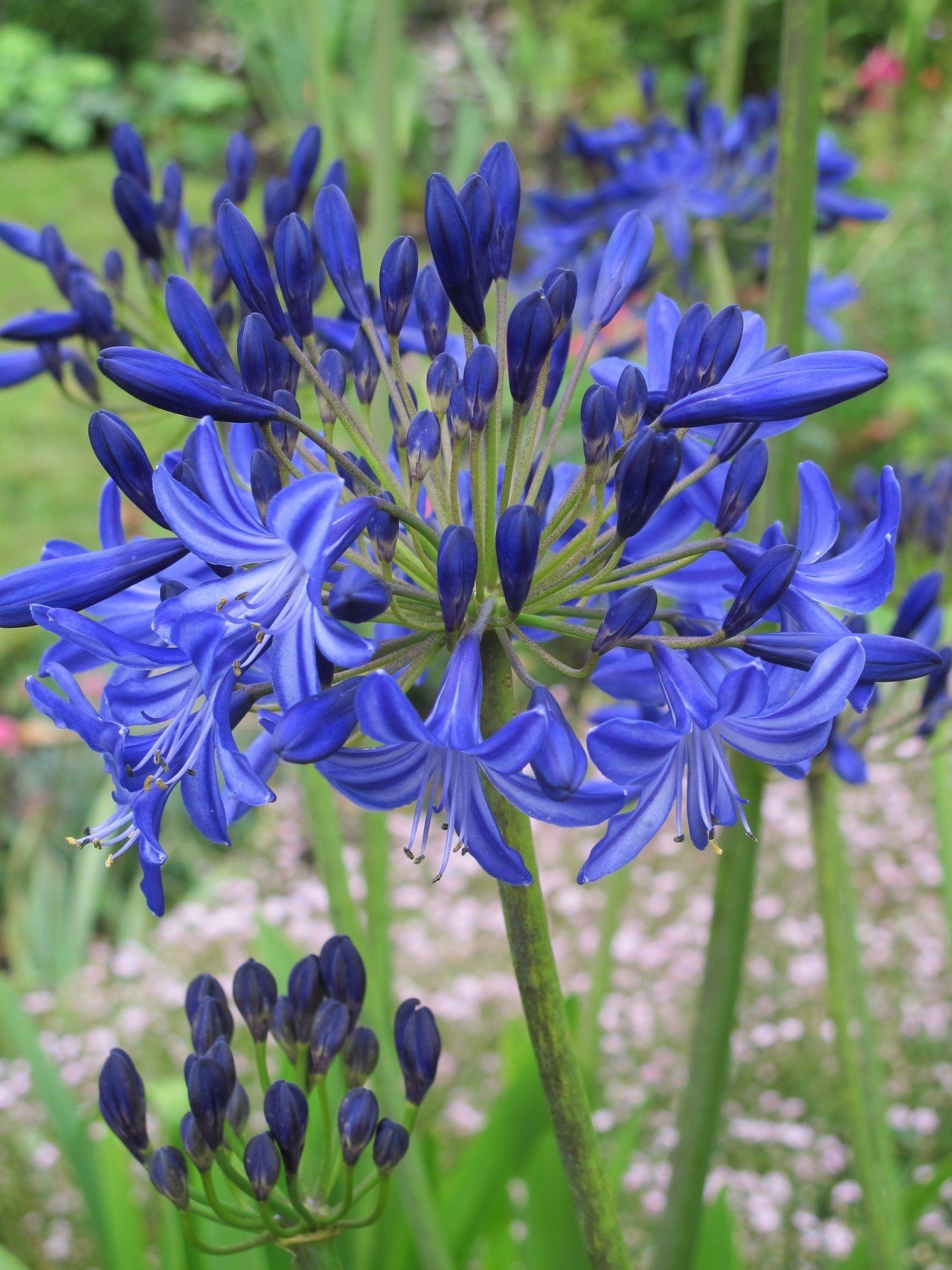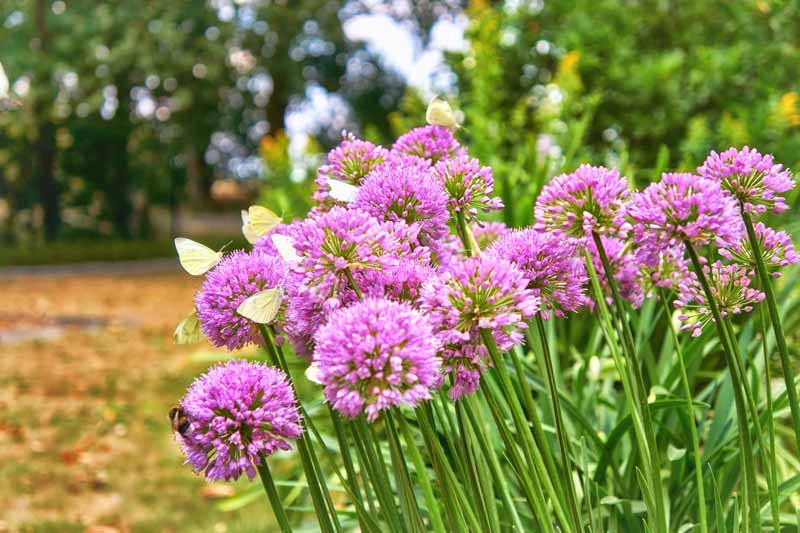Growing Agapanthus: A Full Overview to Beautiful Blooms
Growing Agapanthus: A Full Overview to Beautiful Blooms
Blog Article
Grasping the Art of Agapanthus Treatment: Crucial Steps for Healthy And Balanced Growth and Vibrant Flowers
In the realm of cultivation, the cultivation of agapanthus stands as a satisfying undertaking for those that look for to support these sophisticated blooming plants. With their striking blossoms and stylish foliage, agapanthus has caught the attention of garden enthusiasts worldwide. Nevertheless, accomplishing ideal growth and vivid blossoms requires a nuanced method that incorporates different essential actions. From choosing the appropriate selection to grasping trimming strategies, the journey towards growing growing agapanthus plants is complex and holds the crucial to opening the complete potential of these organic gems.

Choosing the Right Agapanthus Selection

When picking the right Agapanthus selection for your garden, take into consideration variables such as climate suitability, flower color, and development behavior. Agapanthus, frequently known as Lily of the Nile or African lily, can be found in a selection of colors ranging from tones of blue and purple to white. Select a blossom color that enhances your existing garden combination to produce a harmonious landscape. In addition, think about the environment in your area to guarantee the Agapanthus selection you choose can prosper in your certain conditions. Some varieties are a lot more forgiving of chilly temperature levels, while others prefer warmer climates. Understanding the growth practice of different Agapanthus varieties is important for correct placement within your garden. Some selections have a clumping growth habit, perfect for boundaries or containers, while others have an even more dispersing nature, ideal for ground cover or mass growings. By carefully reviewing these elements, you can select the perfect Agapanthus variety to boost the appeal of your garden.
Suitable Growing Problems
Taking into consideration the optimum ecological requirements is essential for effective Agapanthus farming. Agapanthus grows in well-draining soil with a somewhat acidic to neutral pH level. When planting, choose a location that gets complete sunlight to partial color. In hotter climates, supplying some mid-day shade can stop scorching of the leaves. Agapanthus plants are sensitive to cool temperature levels and ought to be protected from frost throughout winter season.
To ensure healthy and balanced growth and vibrant blooms, plant Agapanthus bulbs at a deepness of regarding 2-4 inches and space them 8-12 inches apart. Mulching around the base of the plants assists retain dampness and subdues weed development.
Watering and Feeding Tips
Preserving correct dampness degrees and offering essential nutrients are vital aspects in the care program for Agapanthus plants. When it comes to watering Agapanthus, it is crucial to strike a balance. These plants choose continually damp soil but are at risk to root rot if overwatered.
Fertilizing Agapanthus is essential for advertising healthy and balanced growth and prolific blooms. Apply a balanced fertilizer, such as a 10-10-10 formula, in the early spring as new growth emerges. By following these watering and feeding tips, you can ensure your Agapanthus plants grow and generate lively, resilient flowers.
Trimming Techniques for Agapanthus
Trimming Agapanthus plants at the suitable times and with correct methods is crucial for preserving their health and wellness and promoting optimal development and flowering. The optimal time to prune Agapanthus is in late winter months or early springtime prior to brand-new growth arises.
For flowered stems, wait till the flowers have withered and afterwards cut them back to the base. This not just tidies up the plant's appearance however additionally encourages the development of brand-new flower buds. Deadheading invested flowers can likewise redirect the plant's power into generating even more blossoms as opposed to setting seeds. However, if you want to accumulate seeds for breeding, leave some flowers to completely dry and fully grown on the plant.
Remember to make use of clean, sharp devices to make exact cuts and lower the threat of introducing conditions. Agapanthus. Normal pruning will certainly help maintain your Agapanthus looking neat and healthy and balanced while ensuring a bountiful display screen of attractive flowers
Dealing With Usual Bugs and Diseases
After making sure appropriate pruning strategies for Agapanthus, it is essential to address typical pests and conditions that can impact the health and wellness and vigor of these plants. Agapanthus plants are usually hardy however can still come down with certain problems. One typical pest that affects Agapanthus is the Agapanthus gall midget. This little, orange fly lays its blog here eggs in the vegetation, resulting in distorted growth and flower buds that fall short to open. To battle this parasite, prune and ruin any kind of damaged plant components and think about utilizing insecticidal soap.
Additionally, Agapanthus plants can experience from origin rot if they are grown in improperly draining pipes dirt. By being cautious and taking punctual action versus diseases and pests, you can help your Agapanthus plants grow and generate dynamic blooms. Agapanthus.

Verdict
To conclude, understanding the art of agapanthus treatment includes choosing the right selection, find this giving optimal planting problems, appropriate watering and feeding, suitable trimming methods, and attending to common insects and illness. By adhering to these necessary actions, you can guarantee healthy and balanced development and vivid blossoms for your agapanthus plants. Remember to on a regular basis keep an eye on and maintain your plants to advertise their total health and durability.
To guarantee healthy development and vibrant blossoms, plant Agapanthus light bulbs at a depth of regarding 2-4 inches and space them 8-12 inches apart. By following these watering and fertilizing tips, you can ensure your Agapanthus plants grow and produce dynamic, lasting blossoms.
One common insect that impacts Agapanthus is the Agapanthus gall midget. Additionally, Agapanthus plants can experience from root rot if they are planted in badly draining pipes dirt. By adhering to these crucial steps, you can read more ensure healthy and balanced growth and vivid blooms for your agapanthus plants.
Report this page